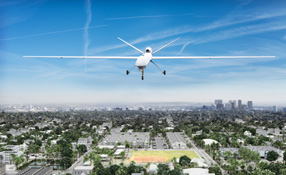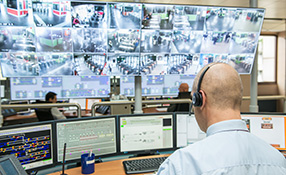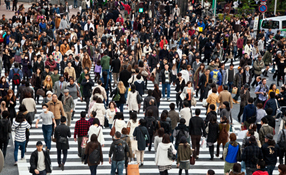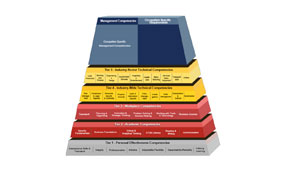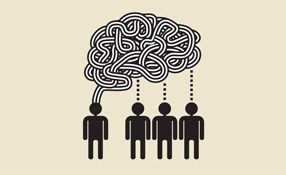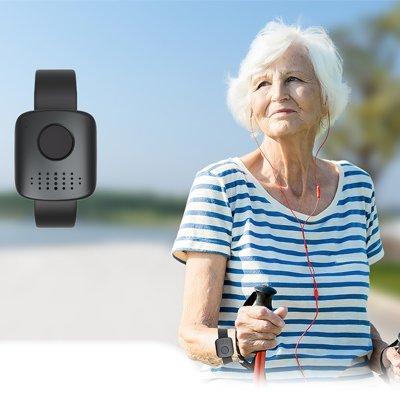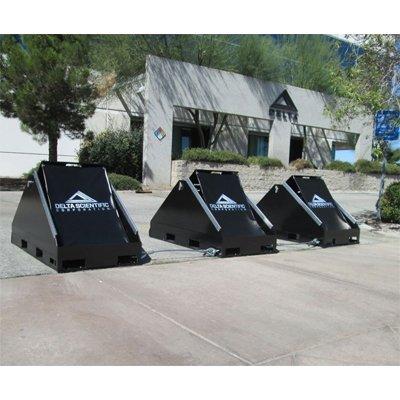 |
| Observers say improved analytic technology and better support technologies are making video analytics effective |
Manufacturers oversold video analytics as a tool that could monitor video for hours on end without losing concentration — something human security officers couldn’t do. Analytics, they said, would detect and alarm on abandoned packages, a person running, a group chasing a person, the presence of people at locations where and when no one should be present and many other scenarios.
Analytics, of course, didn’t perform as advertised. Today that is changing. Observers say improved analytic technology and, more importantly, better support technologies are making video analytics effective.
The market has been slow to accept biometrics as well. Why would a security director spend the money when access cards and passwords could protect people and assets in an office building and information on a network?
“Today, we’re seeing more and more end-users accept biometrics as a way of combatting widespread identity and verification fraud,” said consultant Howard J. Belfor, CPP, president of Belfor & Associates, LLC, Black Mountain, N.C.
The Video Analytics Comeback
While manufacturers say that the algorithms that recognize activity patterns have improved in recent years, the key to the recent comeback of video analytics is improved supporting technology.
“Video analytics did disappoint users for a while,” said Belfor. “Problems included camera limitations, inadequate memory, storage capacity and processing speed — the quality of the overall system.
"We’re seeing more and more end-users accept biometrics as |
“As a result of these improvements, I believe that we’ll see more rapid adoption of video analytics,” he said.
Office buildings, business parks, educational campuses and other facilities that need to monitor hundreds of cameras may find that newly improved video analytics can provide valuable assistance.
What About Biometrics?
The threat of identity theft and the arrival of new technologies that require ironclad identity verification have also increased acceptance of biometric technology by end users.
“Take Apple Pay on your iPhone,” Belfor said. “By entering an iCloud password and your fingerprint, you can enroll in Apple Pay. Then you register your credit cards in the app. Now you can use your phone to charge purchases and leave your credit cards at home.”
Belfor also noted that while biometric technologies have already moved into widespread use in global markets, the U.S. has been slow to accept the technology because of privacy concerns. It would seem that people don’t want the police or their employers to have copies of their fingerprints, handprints or other biometric identifiers.
“The cultural aversion to privacy invasion is holding back the adoption of biometrics in the U.S.,” Belfor said. “It isn’t the technology. The technology is fine and getting better.”
Some problems remain. Belfor noted that fingerprint biometric technology still suffers from misreads and a certain rejection rate. Hand recognition does work reliably, but the equipment is big and bulky. In addition, some people fear that touching handprint readers risks spreading germs. Finally, people don’t like looking into readers that use some eye-based biometrics.
"The cultural aversion to privacy invasion is holding back the adoption of biometrics in the U.S" |
Emerging biometric technologies may solve some of these problems. Zwipe, a Norwegian company with U.S. offices in Palo Alto, Calif., has developed an access card that stores the user’s thumbprint. A user presents the card to a proximity reader, holding it with thumb and forefinger. The thumb rests on a reader in the card. A chip in the card compares the stored print with the one grasping the card. If they match, the door opens. It provides dual ID verification.
There is no database of fingerprints to hack, and no one else can use the card if it is lost or stolen.
Other new ideas include reader technology that measures blood flow through a finger and patterns of veins in the head.
Of course, not everyone needs biometrics. Still the technology can improve access control for facilities that need to boost protections for people — perhaps the offices of a well-known but controversial company.
Biometric technology can also tighten security for facilities that need to protect intellectual property — such as pharmaceutical research.
According to Belfor, digital technology in general is improving across the board today. Security users are beginning to reap benefits from that in the form of more secure facilities and information networks — and there’s a lot more to come.
Learn why leading casinos are upgrading to smarter, faster, and more compliant systems









